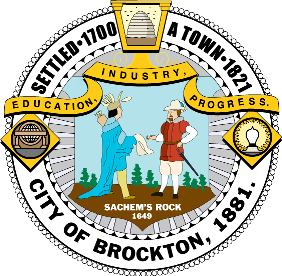Bridgewater stands at what was once the Western Frontier of English settlement in the United States. A "frontier" is the boundary between the area that is considered civilized and the "wild" lands beyond. The notion to "Go West, Young Man!" originated as population grew in the original Plymouth colony, setting off a land grab that moved slowly and eventually gathered speed, until the closing of the frontier in the Great Plains around 1870. Had the original pace continued -- Plymouth 1620, Bridgewater 1656, the English would probably just now be reaching the Pennsylvania Turnpike, but of course things eventually did start to change much more rapidly.
That original purchase took place at a rock in what is now East Bridgewater, and included all or part of what are now seven cities and towns. The very northernmost parts included Rockland, Whitman, and Avon, which were dropped early. By 1716, the remaining town divided into four pieces: North Bridgewater, South Bridgewater, East Bridgewater, and West Bridgewater -- arranged more or less as quadrants of a diamond. Those boundaries were originally drawn so that each of those areas could have a Congregational Church. Eventually, the names evolved, with South Bridgewater becoming simply Bridgewater and North Bridgewater becoming the City of Brockton -- famous first for its shoes and later for its boxers (pugilists, not underwear).
Early in my time in Bridgewater, I noticed some interesting patterns -- for example, the four original towns have roughly the same areal extent, but East and West have small populations, South a bit more, and North more than double the other three combined. This is reflected in the density of street networks -- I first noticed this on a realtor's map of the region -- and has implications for water, taxes, and a host of other matters.
I eventually taught an entire course on the Geography of Brockton, in which I learned at least as much as the students. I taught it in 2007 and 2008, and look forward to doing so again in the future. These days, Brockton is a frequent destination for my Project EarthView visits; I am always amazed by the rich diversity of children and teachers who participate. Five miles from our home is a virtual United Nations!

I'll read it to Hope tonight. Thank you!
ReplyDelete